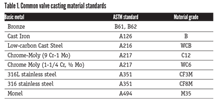NAM Monday Economic Report – February 24, 2014
Mark Twain once said, “If you don’t like the weather in New England, just wait a few minutes.” Indeed, the poor weather conditions that temporarily closed many facilities and hampered shipments in the manufacturing sector over much of the past few weeks appear to have improved.
Moreover, the Markit Flash U.S. Manufacturing PMI appeared to shrug off weather concerns altogether, up from 53.7 in January to 56.7 in February. The pace of growth for new orders (up from 53.9 to 58.8) and output (up from 53.5 to 57.2) increased significantly, with sales growth at its highest level since May 2010. Such data reinforce the notion that manufacturing should rebound from recent weaknesses.
Still, there were signs that global growth might also have slowed a bit. While European manufacturing activity continues to expand modestly and has made substantial progress after its deep two-year recession, there was a slight deceleration in the pace of growth in many key indicators in the preliminary February data. Meanwhile, the HSBC Flash China Manufacturing PMI has now contracted for two straight months, down from 49.5 in January to 48.3 in February. This suggests that the easing that we saw in industrial output during the final months of last year might be continuing in 2014. Nonetheless, even with reduced activity, the Chinese economy continues to grow solidly, with real GDP up an annualized 7.7 percent in the fourth quarter and industrial production up 9.7 percent year-over-year in December.
Regarding price stability in the United States, consumer and producer price data showed modest growth in January. Cold weather had an impact, with higher home heating costs pushing up natural gas and electricity prices. At the same time, pricing pressures remained minimal and in line with the Federal Reserve Board’s stated goal of keeping core inflation below 2 percent at the annual rate. This has allowed the Federal Reserve the luxury of pursuing highly accommodative monetary policies to try to stimulate growth. At the same time, the minutes from the January Federal Open Market Committee meeting suggests that better economic data might necessitate higher short-term interest rates by year’s end—sooner than expected. Either way, with the unemployment rate nearing 6.5 percent, the Federal Reserve will need to change its forward guidance. Long-term asset purchases are anticipated to end by mid-2014.
This week, the highlight will come on Friday when fourth-quarter real GDP will be revised. The consensus is for real GDP to decline from its earlier estimate of 3.2 percent to 2.3 percent. We will also get three new perspectives regarding current regional manufacturing activity in surveys from the Dallas, Kansas City and Richmond Federal Reserve Banks. These reports will be closely watched given the declines seen in last week’s releases. In addition, preliminary data on new durable goods orders and shipments are anticipated to reflect significant weaknesses. Other important releases include new data on consumer confidence, new home sales and the national activity index.
Chad Moutray is the chief economist, National Association of Manufacturers
RELATED CONTENT
-
The Biggest Valves: Sizes Growing in Step with Greater Demand
Valve manufacturers that have the expertise, skills, equipment and facilities to produce large valves are rare.
-
ValvTechnologies and Severn Form Strategic Partnership
ValvTechnologies and Severn Glocon have reached a partnership agreement that will see collaboration between two of the world’s leading engineering and manufacturing companies specializing in innovative, high-end, severe-service valves.
-
Additive Manufacturing of Pressure Equipment
How manufacturers can design and produce PED-compliant equipment using additive manufacturing.








 Unloading large gate valve.jpg;maxWidth=214)

